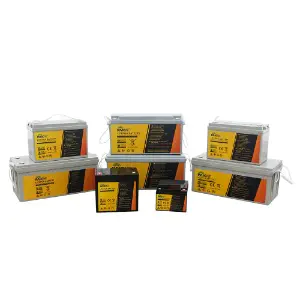The Lithium Iron Phosphate Battery, recognized for its robustness and reliability, plays a pivotal role in the realm of energy storage. As the quest for sustainable and long-lasting power solutions intensifies, the durability of the Lithium Iron Phosphate Battery becomes a focal point for researchers, manufacturers, and consumers alike. This in-depth examination aims to evaluate the resilience and longevity of the Lithium Iron Phosphate Battery, a critical factor in their widespread adoption and performance in various applications.

The durability of the Lithium Iron Phosphate Battery is multifaceted, encompassing aspects such as cycle life, resistance to degradation, and overall reliability under different operating conditions. One of the standout features of the Lithium Iron Phosphate Battery is its ability to withstand a high number of charge-discharge cycles without significant loss in capacity. This characteristic is particularly appealing for applications requiring frequent energy cycling, such as grid energy storage and backup power systems.
The chemical composition of the Lithium Iron Phosphate Battery contributes to its good durability. The iron phosphate (FePO4) cathode material is less prone to structural degradation compared to other lithium-ion battery chemistries, which often experience capacity fade due to repeated lithium-ion insertion and extraction. This resistance to degradation allows the Lithium Iron Phosphate Battery to maintain a steady energy output over extended periods, enhancing their overall lifespan.
Another aspect of durability is the thermal stability of the Lithium Iron Phosphate Battery. These batteries exhibit a lower risk of thermal runaway compared to other lithium-ion chemistries, such as those using cobalt or nickel-based cathodes. The thermal stability is crucial for safety and ensures that the batteries can operate within a wide temperature range without compromising performance or safety.
Furthermore, the durability of the Lithium Iron Phosphate Battery is also reflected in its resistance to overcharging and deep discharging. Overcharging can cause the formation of lithium metal, which can cause internal short circuits and potential safety hazards. Deep discharging, on the other hand, can cause structural damage within the battery. The Lithium Iron Phosphate Battery is designed to handle these conditions better than many other lithium-ion battery chemistries, thus prolonging their service life.
In terms of calendar life, the Lithium Iron Phosphate Battery also shows commendable performance. They can maintain a significant portion of their original capacity even after years of storage, making them an attractive option for long-term energy storage solutions. This attribute is particularly important for grid storage applications where batteries may be charged infrequently but need to maintain high capacity over many years.
However, it is important to note that while the Lithium Iron Phosphate Battery exhibits good durability, they are not immune to degradation. Factors such as high temperatures, rapid charging, and deep discharging can still impact their lifespan. Therefore, proper management of these batteries, including suitable charging protocols and temperature control, is essential to improve their durability.
In conclusion, the durability of the Lithium Iron Phosphate Battery is a testament to their suitability for a wide range of energy storage applications. Their ability to withstand numerous charge-discharge cycles, coupled with their thermal stability and resistance to overcharging and deep discharging, positions them as a reliable choice for long-term energy storage. As the energy storage market continues to evolve, the focus on durability will remain a key factor in the ongoing success and adoption of the Lithium Iron Phosphate Battery.
Get to know quickly
We are a professional lithium iron phosphate battery, solar energy storage system, industrial and commercial energy storage system manufacturer.
 +86-133 3592 3377
+86-133 3592 3377
 +86-4008833583
+86-4008833583
 Email: [email protected]
Email: [email protected]

Copyright © Zhejiang Paichen Energy Storage Group Co., Ltd All Rights Reserved.
Battery Energy System Manufacturer
